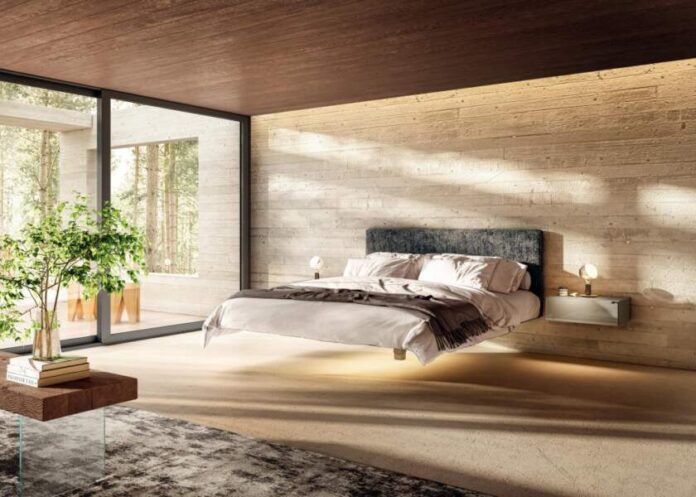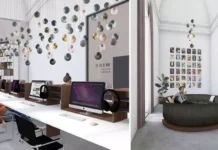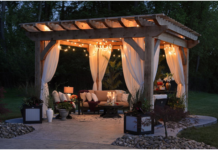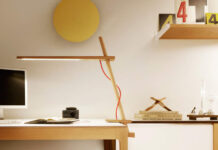The landscape of Italian interior design is constantly evolving, influenced by movements that redefine the contours of home aesthetics and functionality. This change is distinguished by a remarkable harmony between innovation and tradition, setting new standards for contemporary living spaces.
The creativity of Italian designers, combined with a constant search for excellence, helps to propel interior design beyond conventions, paving the way for bold tendencies that transcend eras. Let’s explore the current trends and how they are redefining our way of living in spaces.
Back to roots: neo-traditionalism
Neo-traditionalism emerges as a contemporary response to the desire to reconnect with cultural heritage. This trend brings classic elements back to life, integrating them into current designs to create a timeless style.
Traditional materials like solid wood and natural fabrics blend with modern shapes, thus breathing new life into interiors. It’s a reconciliation between past and present, where the aesthetic value of traditions merges into modern comfort.
Designers revisit ancient craftsmanship, offering pieces that are both elegant and contemporary. This approach does not just preserve Italian heritage: it transforms it, making it relevant for today’s consumers. Neo-traditionalism thus represents a harmonious fusion, celebrating authenticity while embracing innovation.
Eco-design and sustainability
The commitment to the environment also shapes the interior design sector, with a priority given to eco-design and sustainability. This trend is manifested by the adoption of renewable materials and ethical manufacturing processes, emphasizing ecological responsibility in furniture creation.
Designers and manufacturers adopt methods that consume less energy and reduce material waste, aligning with a more sustainable vision. Recycling and reusing products become pillars of this new era, propelling forgotten materials towards new uses.
This shift towards sustainability is not just a trend but becomes a demand for consumers seeking spaces that reflect ecological awareness. By incorporating these principles, Italian interior design demonstrates that functionality and environmental responsibility can coexist, leading the way to greener and more conscious habitats.
Minimalism and fluid spaces
The quest for serenity and clarity is expressed through minimalism and the design of fluid environments. This trend favors simplicity, form purification, and space optimization, fostering a habitat free of clutter.
Minimalist interiors highlight clean lines and neutral colors, creating a restful and welcoming atmosphere. The absence of clutter allows for easy movement in the rooms, reinforcing the idea of an orderly and peaceful life. The materials used are often natural and understated, contributing to a balanced and timeless ambiance.
This style encourages a reevaluation of our relationship with objects and space, inviting a more conscious and measured lifestyle. In this environment, every element has its place and reason for being, reflecting a thoughtful approach to interior design.
Personalization and uniqueness: the advantages of Made in Italy furniture
Finally, personalization and uniqueness prove to be crucial aspects of Italian furniture. The artisanal approach and attention to detail allow each customer to find or create pieces that perfectly match their tastes and requirements.
Italian artisans combine traditional skills and innovations to offer tailor-made solutions that can transform every space into a unique and personal environment.
Thus, choosing Italian furniture means not only bringing a touch of elegance and quality to one’s interior but also investing in pieces that reflect the individual’s identity and values, making every home distinct and intimate.
Elegance, personalization, and versatility: the inimitable appeal of LAGO design furnishings
Founded in 1976, LAGO is an Italian company active in the Made in Italy design field, creating elegant and refined furnishing solutions. The collection includes an exclusive selection of high-quality furniture, characterized by a modular and modern design. Conceived to last over time, the products integrate perfectly into every area of the home, as well as into collective spaces.
LAGO’s innovative vision finds its origins at the end of the 19th century, rooted in a centuries-old artisan tradition that has always defined the family’s history. Reaching the fourth generation in 2006, the company opened to the international market.
In addition to offering its unique design, it has implemented an unconventional communication strategy, with a strong focus on the digital environment. Daniele Lago, a young entrepreneur, leads the company during this period, placing culture at the heart of his strategic vision for development. Today, LAGO extends its presence to over 20 countries worldwide, with a network of more than 400 selected stores.
From the modern kitchen to the floating bed, the furniture pieces in the collection are designed to integrate harmoniously into every setting. Moreover, LAGO products are sustainable, high-quality, and characterized by clean lines and timeless design. They are designed to ensure great flexibility and personalization in the organization of spaces.
Many values animate the Italian company, including an expanded view of design, conceived as an effective tool of social transformation. Sustainability is also at the core of its philosophy, reflected in a consistent commitment to eco-responsible materials at every production stage.
With its expanding community, LAGO is also committed to strengthening its digital ecosystem. In 2023, the new website was launched, designed with the goal of offering an inclusive and personalized browsing experience, while reducing costs and CO2 emissions, thus supporting a more sustainable approach in digital touchpoints.
For more information, visit ApzoMedia



































































